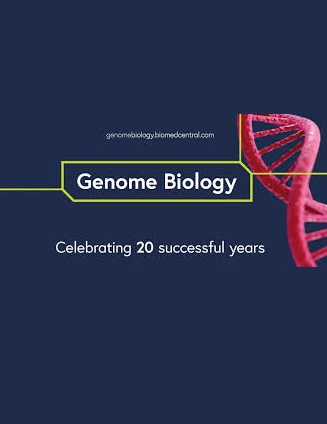Pamoic acid和carbenoxolone以DNA拓扑特异性的方式特异性抑制细菌、哺乳动物细胞和小鼠中的CRISPR/Cas9
IF 10.1
1区 生物学
Q1 BIOTECHNOLOGY & APPLIED MICROBIOLOGY
引用次数: 0
摘要
CRISPR/Cas对目标DNA切割活性的调节在少数细菌或噬菌体中自然进化,但在高等物种中缺乏。因此,迫切需要鉴定能够抑制Cas9活性的生物活性剂和机制来重新平衡这种新的遗传压力。在这里,我们通过筛选4607种化合物确定了四种Cas9特异性抑制剂,这些化合物可以通过三种不同的机制抑制Cas9的内切酶活性:底物竞争和原间隔器邻近基序(PAM)结合位点占用;substrate-targeting;以及sgrna靶向机制。这些抑制剂以剂量依赖的方式抑制化脓性链球菌Cas9 (SpyCas9)、金黄色葡萄球菌Cas9 (SauCas9)和SpyCas9镍酶为基础的BE4碱基编辑器在体外纯化酶测定、细菌、哺乳动物细胞和小鼠中的活性。重要的是,与超螺旋质粒相比,帕莫酸和卡贝诺洛酮显示出DNA拓扑选择性,并优先抑制线性DNA的切割。这些药理学选择性抑制剂和新机制为控制Cas9的dna拓扑选择性活性提供了新的工具。本文章由计算机程序翻译,如有差异,请以英文原文为准。
Pamoic acid and carbenoxolone specifically inhibit CRISPR/Cas9 in bacteria, mammalian cells, and mice in a DNA topology-specific manner
Regulation of the target DNA cleavage activity of CRISPR/Cas has naturally evolved in a few bacteria or bacteriophages but is lacking in higher species. Thus, identification of bioactive agents and mechanisms that can suppress the activity of Cas9 is urgently needed to rebalance this new genetic pressure. Here, we identify four specific inhibitors of Cas9 by screening 4607 compounds that could inhibit the endonuclease activity of Cas9 via three distinct mechanisms: substrate-competitive and protospacer adjacent motif (PAM)-binding site-occupation; substrate-targeting; and sgRNA-targeting mechanisms. These inhibitors inhibit, in a dose-dependent manner, the activity of Streptococcus pyogenes Cas9 (SpyCas9), Staphylococcus aureus Cas9 (SauCas9), and SpyCas9 nickase-based BE4 base editors in in vitro purified enzyme assays, bacteria, mammalian cells, and mice. Importantly, pamoic acid and carbenoxolone show DNA-topology selectivity and preferentially inhibit the cleavage of linear DNA compared with a supercoiled plasmid. These pharmacologically selective inhibitors and new mechanisms offer new tools for controlling the DNA-topology selective activity of Cas9.
求助全文
通过发布文献求助,成功后即可免费获取论文全文。
去求助
来源期刊

Genome Biology
Biochemistry, Genetics and Molecular Biology-Genetics
CiteScore
21.00
自引率
3.30%
发文量
241
审稿时长
2 months
期刊介绍:
Genome Biology stands as a premier platform for exceptional research across all domains of biology and biomedicine, explored through a genomic and post-genomic lens.
With an impressive impact factor of 12.3 (2022),* the journal secures its position as the 3rd-ranked research journal in the Genetics and Heredity category and the 2nd-ranked research journal in the Biotechnology and Applied Microbiology category by Thomson Reuters. Notably, Genome Biology holds the distinction of being the highest-ranked open-access journal in this category.
Our dedicated team of highly trained in-house Editors collaborates closely with our esteemed Editorial Board of international experts, ensuring the journal remains on the forefront of scientific advances and community standards. Regular engagement with researchers at conferences and institute visits underscores our commitment to staying abreast of the latest developments in the field.
 求助内容:
求助内容: 应助结果提醒方式:
应助结果提醒方式:


